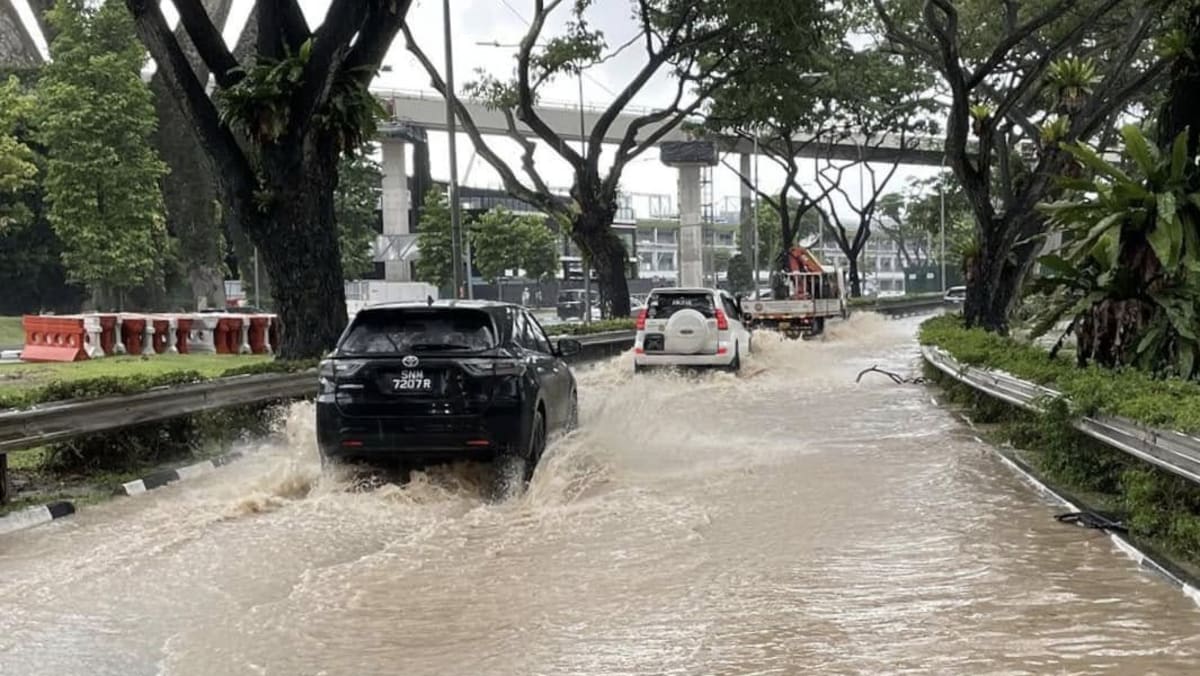SINGAPORE: With a monsoon surge forecast to bring rainy and windy weather to Singapore over four days from Friday (Jan 10), national water agency PUB has warned that flash floods could occur.
There were already instances of flooding in the last two months of 2024 amid heavy rain, with scenes of cars driving through the waters.
What should you do if your vehicle is caught in a flash flood? Are there safety procedures for public buses and commuters?
CNA takes a look at some safety tips, as well as the guidelines from transport operators.
Should I drive through floodwaters?
Avoid driving through floodwaters as much as possible. As a general rule, do not attempt to drive through water deeper than 15cm (6 inches), or above kerb height.
There are several dangers of pushing through floods, such as the risk of engines stalling.
“If water enters the engine through the intake or air filter, it can cause the engine to seize, potentially resulting in catastrophic damage,” said Mr Wong Che Wey, regional technical training manager of Motul Asia Pacific, which manufactures products for engines.
Floodwaters can also affect a vehicle’s electronics, he said, adding that control units mounted on a vehicle’s floor panels are the most vulnerable when water enters the cabin.
Mr Jake Ler, chief marketing officer at motoring platform Motorist, pointed out that travelling through floodwaters placed drivers at risk of “aquaplaning”.
This is when tyres lose traction on a wet surface, leading to a loss of control, he explained.
“Additionally, hidden dangers such as potholes, debris or uneven road surfaces submerged in the water can cause unexpected damage or accidents,” Mr Ler said.
What if I can’t find an alternative route?
If an alternative route isn’t possible and the road appears passable, drivers should carefully evaluate the situation.
Motorists should consider the water depth and their vehicle type, Mr Ler said, pointing out that some vehicles such as an SUV might be better suited for passing through the waters compared to a low-slung sedan.
If the conditions allow for it, drivers should engage their low gear, drive slowly and steadily, as well as avoid sudden braking in the middle of the flood, said Mr Wong.
“This approach helps reduce the exposure of the engine to water and lowers the risk of losing control of the vehicle,” he explained.
PUB’s advice is to stay close to the middle lane as water tends to accumulate on the side lanes – and go through one vehicle at a time.
What should I do if my vehicle gets stuck?
If the engine stalls, the driver should not restart it as this could introduce more water into the engine and cause greater damage, said Mr Wong.
Affected drivers should turn on their hazard lights to alert other motorists and contact emergency services or a tow service to get their vehicle to a workshop for inspection and repair, he added.
Drivers who are stuck should immediately exit their vehicle and move to higher ground if water levels continue to rise, said Mr Ler.
“Quick and decisive action in such situations can be the difference between a close call and a dangerous scenario,” he said.
Are electric vehicles at greater risk of malfunctioning in a flood?
Experts say electric vehicles are not at greater risk of malfunctioning in flood conditions.
“Modern electric vehicles are designed with advanced safety features, such as sealed battery packs and insulated high-voltage systems, which effectively prevent water from entering and damaging critical components,” said Mr Ler.
“Many EVs also include fail-safe mechanisms that automatically disconnect the high-voltage system in the event of a collision or short circuit, ensuring driver safety.”
Mr Wong agreed that electric vehicles are generally designed with safety features to withstand water.
However, prolonged exposure to water could still pose risks and this could vary by the vehicle’s manufacturer and model, he said.














